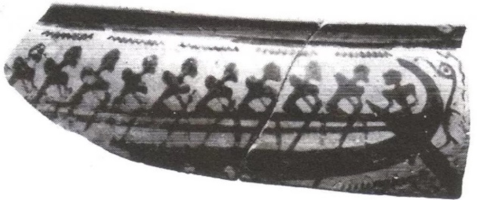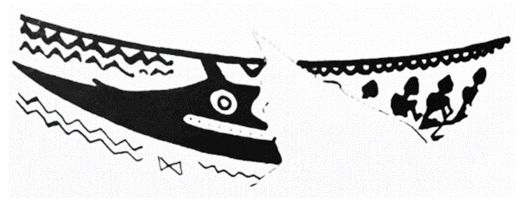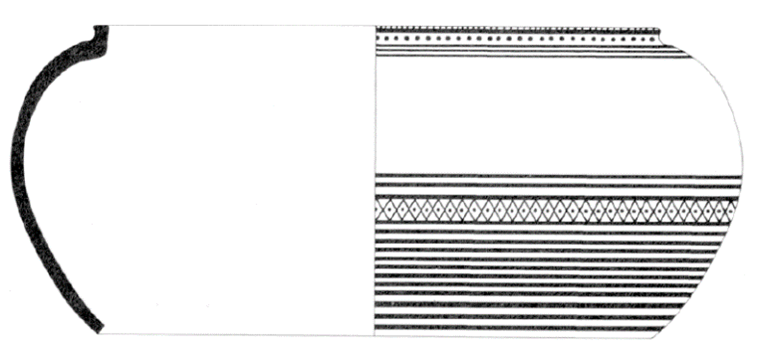Ship A: single-levelled ship to the left. Low flat hull, massive triangular bow with concave stempost integrating the bow projection and terminating in a short spike pointing forward. There is a plank protruding from the stempost at the level of the base of the forecastle. Tréziny's reconstruction of a second plank protruding further down is less certain. The occulus resembles a fish eye, consisting of a reserved circle with a dot. Double-stepped integrated forecastle with the lower section incorporating a screen in the form of a reserved hatched square, with railing above it comprised of two vertical and two horizontal lines. The second, higher part of the aftercastle is made of a thin reserved rectangle filled with oblique strokes. Its upper horizontal is longer on both sides, giving the impression of spikes. There is a single thin horizontal line above the hull, to which it is joined by tightly spaced horizontal strokes. This is clearly a raised rail supported by struts. The rowers have their bodies fully shown, with their torsos inclined forward and their knees bent. There are eleven oars with triangular oar blades, but only six rowers preserved to various degrees.
Ship B: midships section of an identical ship, preserving parts of five rowers and four oars. The only difference is that the stanchions joining the railing are oblique rather than vertical.











